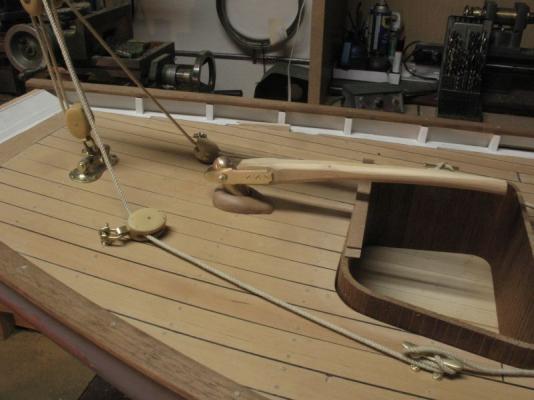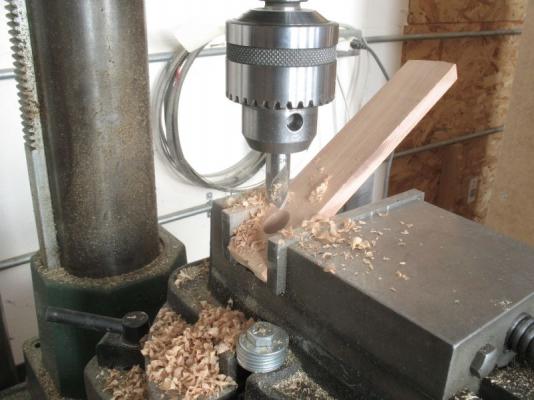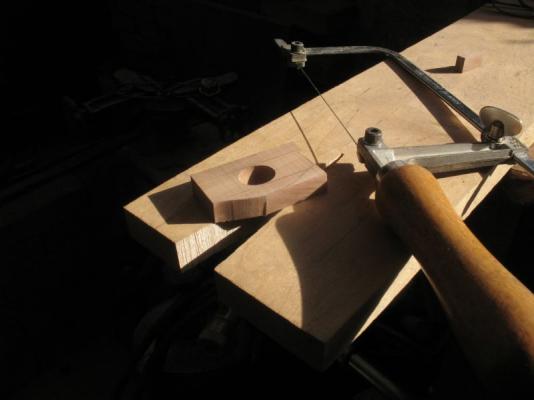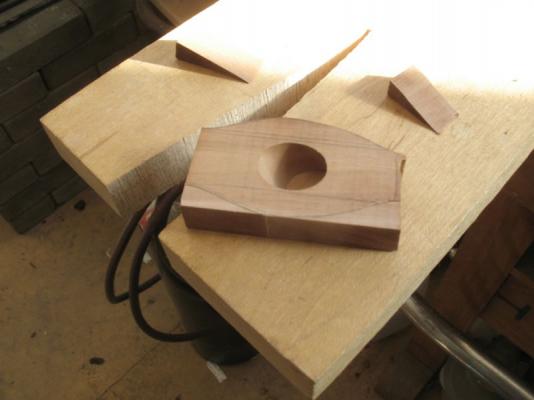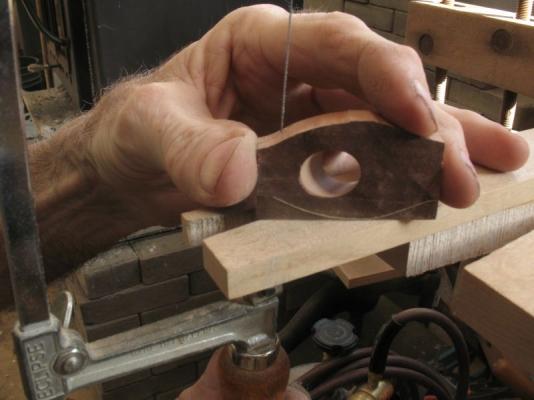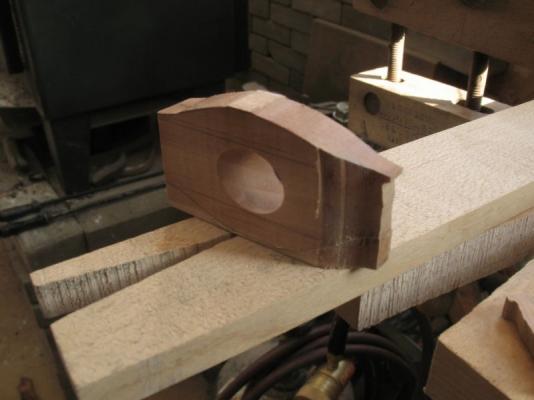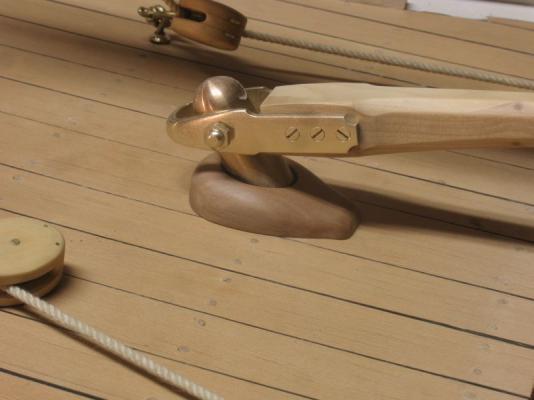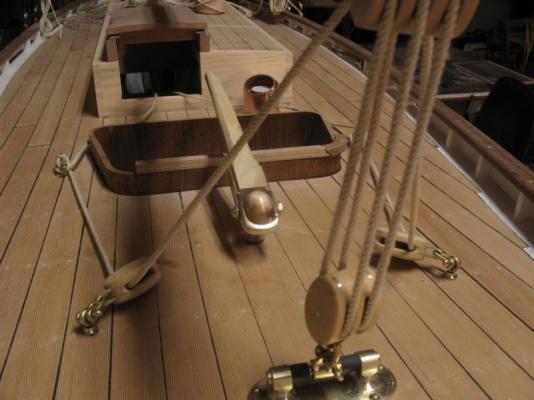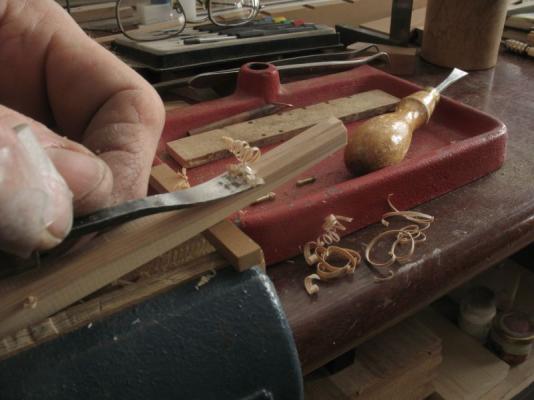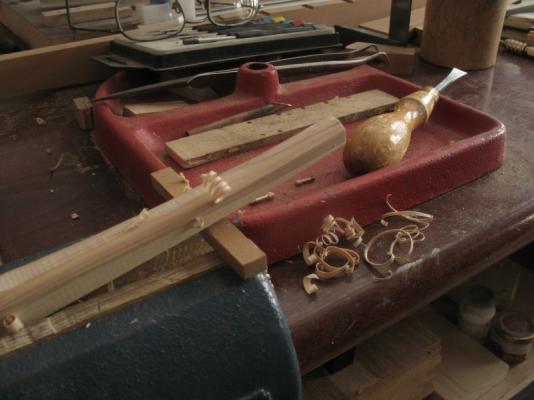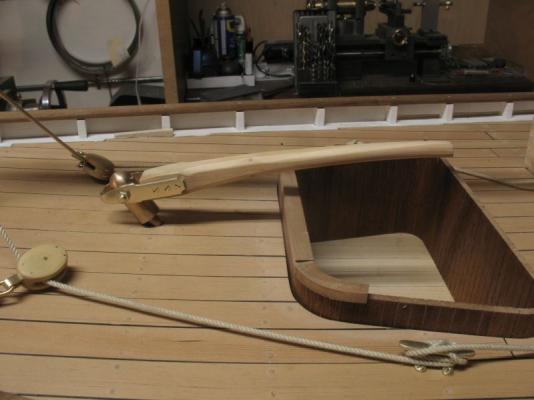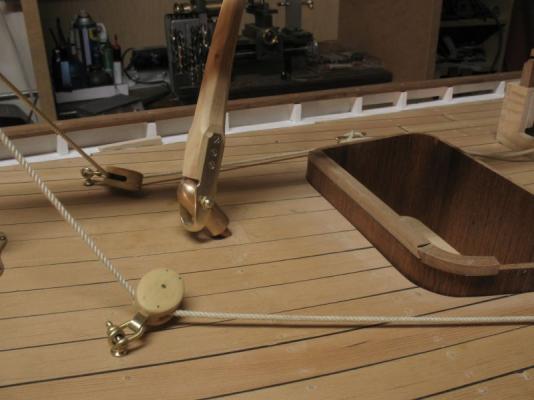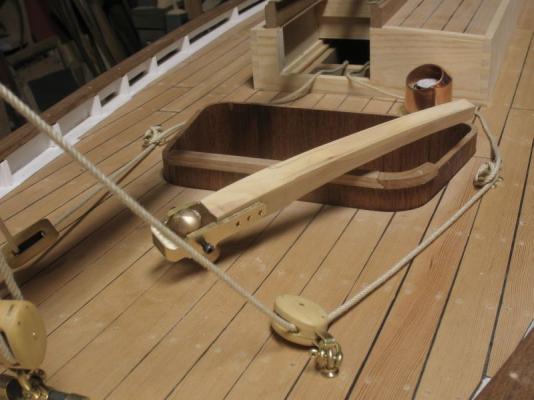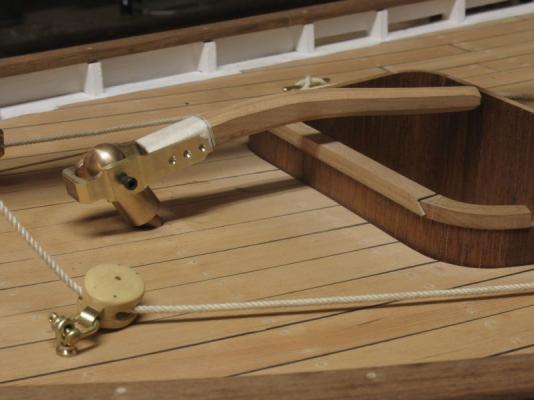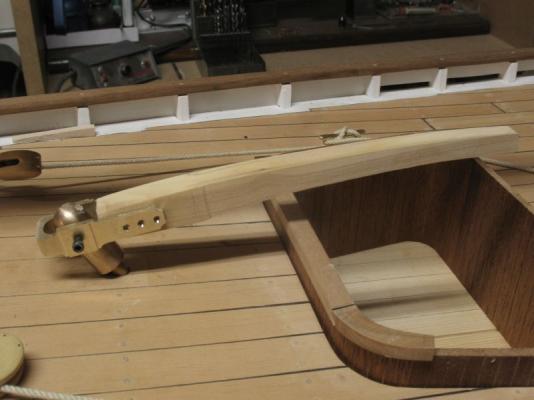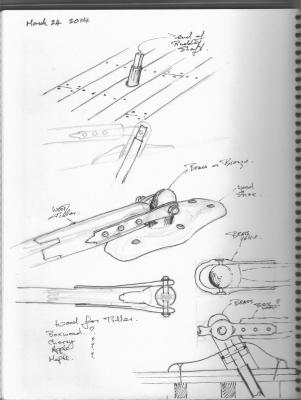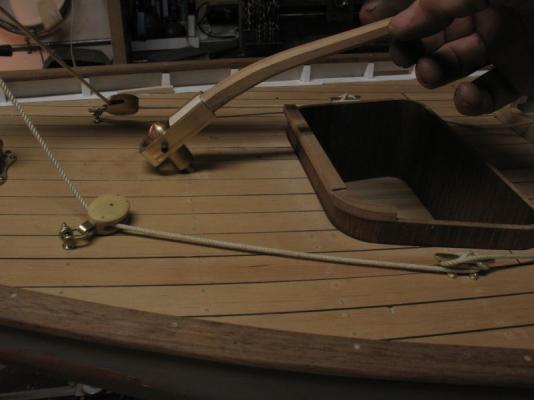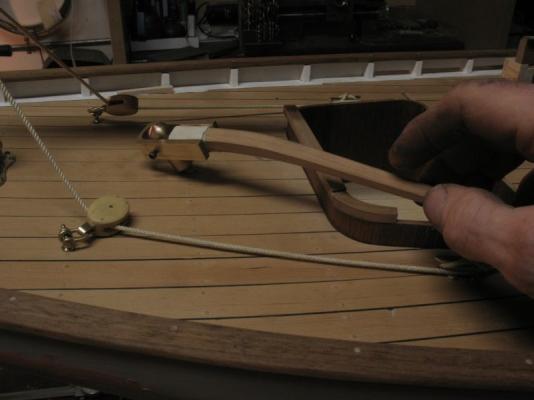-
Posts
5,200 -
Joined
-
Last visited
Content Type
Profiles
Forums
Gallery
Events
Everything posted by michael mott
-
Floyd, are still sure you are not going to put her in the water? Michael
- 80 replies
-
- Americas Cup
- Endeavour
-
(and 1 more)
Tagged with:
-

micro table saw stop
michael mott replied to michael mott's topic in Modeling tools and Workshop Equipment
Hi Richard, not a dumb question at all, and if you read the whole of the information on the Hobby mill site you will also notice that Jeff said that he was not endorsing his method or recommending it as a preferred method but that it worked for him. I might suggest that like all things there are a number of different ways to acheive the same results, what is comfortable for some is not for others, that said having a larger "vocabulary" enables one to be able to use more than just one word. Some times the particular piece of wood is more easily cut using one or the other methods or even types of saw. This has been my experience. michael -
Ed on the contrary not confusing at all. I find that your explanations to be most educational. great pictures as well, and the finished work speaks for itself. Michael
- 3,618 replies
-
- young america
- clipper
-
(and 1 more)
Tagged with:
-
Dan true, however I do prefer to have the lager piece next to the fence it is much easier to push and control, I think that setting up to avoid the pinching at the rear of the blade is better, but that is just my experience. Mark I think that this is a good thing to do, as you say this is an add on perhaps a small shim at the end towards the operator would cause a slight rake or anlge from the front to the rear of the blade. I would also be tempted to set up a solid indexing block forward of the start of the blade, like the one in that thread. I am not a huge fan of feather boards. that said I do use them occasionally. Michael
-
Mark, Steve thanks. and for the likes I just finished replacing the broken picture links from the December 2013 posts that were lost during the recent server hiccup. so all should be back now if there are still any that anyone finds missing let me know. Michael
- 2,215 replies
-

Cutty Sark by NenadM
michael mott replied to NenadM's topic in - Build logs for subjects built 1851 - 1900
nice work on the deck Nenad. I think that modelwork is a great antidote for politics, take one hour of modelwork each day to overcome the effects on ones mind. michael- 4,152 replies
-
- cutty sark
- tehnodidakta
-
(and 1 more)
Tagged with:
-
Thank you all for the likes today. This afternoon I finished the shoe. I don't know what else to call it. A small slab of apple was set up in the mill and the broken reground 5/8 endmill was used like a fly-cutter to bore the 5/8 hole. Next the basic shape was fretted out with the jewelers saw The pieces from one side were then stuck back on with some double sided tape so that the other profile could be cut. After a lot of filing and sanding then steel wool the shape is almost finished Tomorrow a few hold down screws. then back to the cockpit cap rail. Michael
- 2,215 replies
-
There is always a first time for just about everything,.... nicely done. michael
- 209 replies
-
Very interesting stuff that I am learning about submarines in your build log Piet, thanks for the historic pictures. Michael
-
Congratulations Remco, The results of your journey certainly testify to the exacting standards that you set for the rest of us. Michael
- 1,215 replies
-
- sloop
- kingfisher
-
(and 1 more)
Tagged with:
-
John, thanks. Joe thanks for checking in I will do my best. Drazen, thanks for your comment, i am wondering about how to deal with the sailing. Sometimes I wish we had a local pond and not a big lake. Denis I definitely plan to get her in the water. I hope to pull it off this summer. Bob thanks again, Tom I wish, the thing is that I am a bit of a pack rat and over the last 45 years I have been collecting material, wood metal plastic leather wire and so on, A funny story is this one: for one of the projects built for a client when I was building models and exhibits before retiring, needed some fine spring wire for a model rocket that was to launch and rise 35 feet the rocket was in a science centre and the cabinet looked like a payload for the shuttle, the wire I needed was two lengths about 40 feet of some wire about the same thickness as the smallest string in a guitar. I went to a local manufacturer of springs in Edmonton and told them what I wanted the chap at the desk went out to the back and took longer that I thought it would take to come back with 40 feet of fine wire. after about 20 minutes he came back out with a coil of wire that was about 15 inches in diameter that looked like it had a couple of miles of this stuff, he was clearly frustrated and told me that he couldn't spend any more time trying to find the end, and I could purchase the lot for 20 dollars. I agreed and walked out with a couple of miles of very fine wire. and I have enough wire to last the next three lifetimes for what I need it for. I guess as I purchased materials for projects over the years the left overs would be saved instead of being tossed because I knew that down the road I would be able to use them. The same goes for tools over a long time doing a great variety of different models and exhibit projects if a specific tool was needed I would build it into the price. I would rather make something than buy it. Sometimes there are also minimums that one has to purchase when doing this stuff commercially, this is the case with most of the brass that I have that is odd sized and not the usual hobby type sizes. And if a tool breaks then I save the parts and regrind them into another. The curse is I never want to move again...ever. Andy thanks for stopping by your thoughts about the control are interesting, that said my knowledge about electronics and microprocessors would fit on the head of a pin. I'm of the old flashlight battery and bulb school of electronics. And if I thought I could get away with it I would train a couple of mice to handle the sheets, Joking aside I am hoping to keep this as simple as the old pond yachts (I know that this is really not possible given what I have already done) the sailing is important but only so far as I will know that it will sail, for me the design and building of the next boat will take over as soon as this one is finished. For me the process is what drives my energy not the finished product so much. As I finish each piece the next task or item becomes the next challenge to solve, keeping track of all the parts would be overwhelming otherwise. I'm not sure that this is making sense but it is what it is. Daniel I look forward to seeing your jig. because I do want to add one. Michael
- 2,215 replies
-
Hello Dražen that deck hatch surround sir is some of the crispest joinery that I have seen. beautifully executed. Michael
- 487 replies
-
- ship of the line
- 80 guns
-
(and 1 more)
Tagged with:
-
Aussie, thanks used to Sail, the Lilac was a small tree like White Lilac that I pruned in 1973 I only have a little left so I keep it for special occasions. Bob thanks and I think it looks even better now. Nils Yes I would like a full size one of these too. Today I finished up shaping the brass yoke and have almost finished shaping the tiller, it is such a lovely wood to work with.I really like the way the wood curls off when using the chisels. All that is left is the very end. after the shaping with the chisels i just gave it a rub down with a little steel wool I could not bring myself to putting any sandpaper on it. As I was shaping the brass I kept thinking of famous line "less is more" usually associated with Ludwig Mies Van Der Rohe (1886-1969) (the origin of the phrase surprised me) and so I continued to shape until it felt better. one of the things that occurred to me as I was shaping was the potential chafing of ropes on the yoke and so a more simple shape lessens that possibility. Tomorrow I will add the transition shoe for the deck. Michael
- 2,215 replies
-
Well according to the Random House Dictionary definition 2 is that a jack shaft is the shaft upon which an idle wheel or fair-lead turns. I thought that there were fair-leads on ships and boats Michael
- 420 replies
-
So let us all hope that we are not named Jack.... no offense meant to the Jacks of the world. So where is the Jack-staff located to bring this back to the build? Michael
- 420 replies
-
Steve, yes it is rather bigger than a lot of the models on the forum. John, sometimes I think I should stay out of the RC conversations as well. Mark, sometimes I think that I should forget about sailing her.... but then I would always wonder. Sherry, thanks, I like the term full fledged, conjures up thoughts of flight and wind. This evening I did a little more work on the tiller, after doing a few sketches this morning to get a better sense of the shape. the next step in shaping the yoke on the mill and the new Lilac tiller, I am looking forward to the fine work on the lilac it is such a wonderful wood to work with and has the aroma of aromatic cedar. and is very fine grained with purplish streaking. Michael
- 2,215 replies
-
Spyglass I am not sure I understand your comment the way it is working is the way I thought it would work. I'm happy you liked the video. Michael
- 2,215 replies
-
Robert your work with the bone looks very good, it must be a very challenging material to work with. Michael
- 241 replies
-
- royal caroline
- yacht
-
(and 1 more)
Tagged with:
-
Denis wrote Hi Denis, after my test I discovered that this does not work for the following reason. 1 There is no fixed position of the sheet to the boom. 2 It is only when one end of the sheet is fixed , ie cleated or a winch stopped that the boom can be let out or pulled in. and this is where the triple purchase gives the crew member the extra advantage of the triple purchase for fine adjustment. 3 If I were to do that then the number of turns for either side of the centre would be doubled. to let the sheet out fully. on either drum. 4 if one is coiling up and the other being let out the the position of the boom does not change, it would only change with a differential speed of the two drums which in my limited view would greatly increase the complexity of the controlling a transmitter even if it was computer programmed. For all the reasons stated I think that having both drums moving simultaneously and in the same direction will be adequate. of course the test was under very false and controlled conditions I am looking forward to trying the test with a sail bent to the spars and a light breeze to see how the sail snaps past centre as the boat crosses the line of wind. I will do this test on dry land using a turntable of some sort. Bob we must have been posting at the same time. Thanks for your thoughts about the stops, I agree that there will need to be some form of mechanical stop at both ends. A definite stop with a clutch rather than a micro switch which can have overriding effects due to the incoming speed of the switch riser on the drum Michael
- 2,215 replies
-
Steve, thanks for your thoughts about my machining. Doris it is always an honour to receive your praise. Bob, sometimes I wish you lived just around the corner so I could talk to you about design issues, your experience would be very informative. Tom, thanks and yes I think it is on the right track. Mark thanks, each day I realize how much more work and testing there is so it is really nice when they work out. today I also managed to get a start on the reworking of the rudder shaft top. I machined a 1 1/2 inch length of 1/2 inch diameter brass rod to a dome end and bored out the inside to fit the copper shaft and also to fit a piece of square brass tube then slipped a piece of 1/4 inch brass tube in after these were soft soldered into the hole then the cross hole was drilled and tapped 4x40 for the yoke fixing screws. The body of the yoke is just rough machined at this point and the apple wood tiller will need to be replaced with a new one because it is about a 3/64 too narrow. so some masking tape thickener to see how the length looks. I like the way it is articulated now so will finalize the shaping of the yoke tomorrow. I will make a wood shoe to clean up the transition from the deck to blend in the angles. Michael
- 2,215 replies
About us
Modelshipworld - Advancing Ship Modeling through Research
SSL Secured
Your security is important for us so this Website is SSL-Secured
NRG Mailing Address
Nautical Research Guild
237 South Lincoln Street
Westmont IL, 60559-1917
Model Ship World ® and the MSW logo are Registered Trademarks, and belong to the Nautical Research Guild (United States Patent and Trademark Office: No. 6,929,264 & No. 6,929,274, registered Dec. 20, 2022)
Helpful Links
About the NRG
If you enjoy building ship models that are historically accurate as well as beautiful, then The Nautical Research Guild (NRG) is just right for you.
The Guild is a non-profit educational organization whose mission is to “Advance Ship Modeling Through Research”. We provide support to our members in their efforts to raise the quality of their model ships.
The Nautical Research Guild has published our world-renowned quarterly magazine, The Nautical Research Journal, since 1955. The pages of the Journal are full of articles by accomplished ship modelers who show you how they create those exquisite details on their models, and by maritime historians who show you the correct details to build. The Journal is available in both print and digital editions. Go to the NRG web site (www.thenrg.org) to download a complimentary digital copy of the Journal. The NRG also publishes plan sets, books and compilations of back issues of the Journal and the former Ships in Scale and Model Ship Builder magazines.



